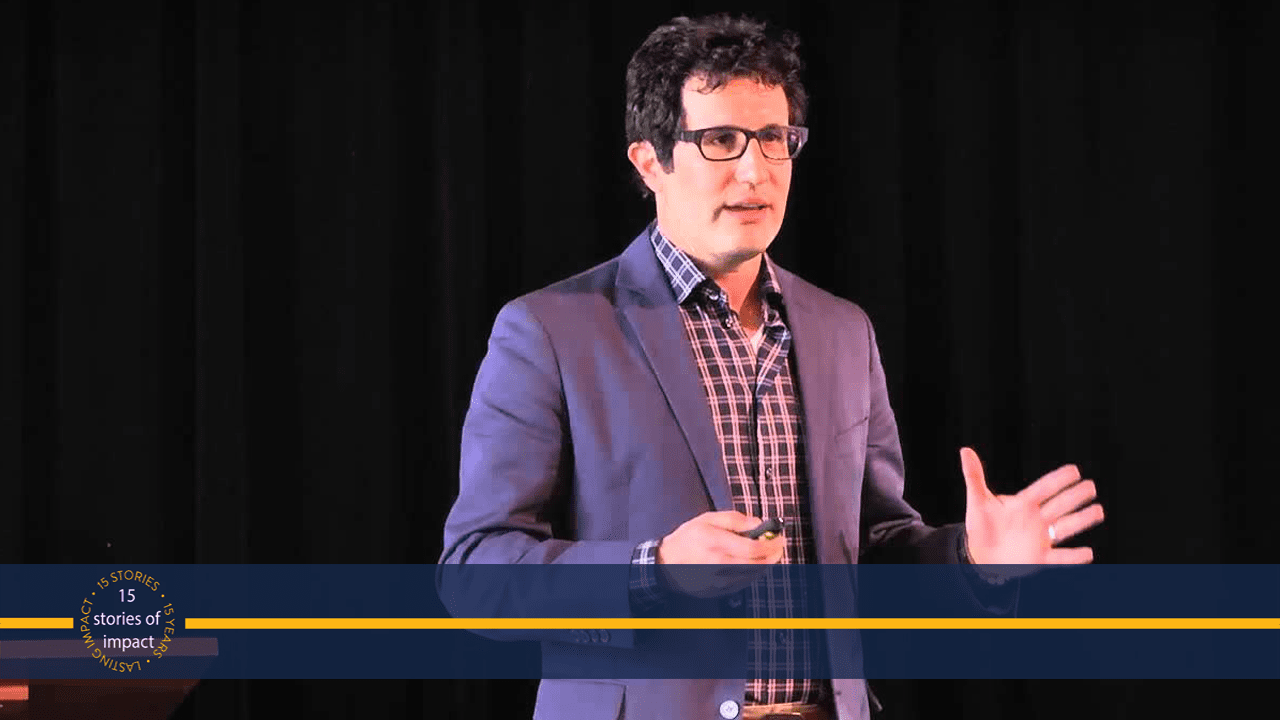The Flourishing Leader: Practices and Tips for Catalyzing Change From the Inside Out
By Deborah Fleischer, CRB Communications Consultant, and Christina Meinberg, CRB Associate Director. This is part of series highlighting the work of CRB alumni. In this two-part post we focus on David Sherman, CRB Alumni Advisory Board Member and Haas MBA ’85. Part one focused on the concept of “flourishing” and this post provides specific suggestions for getting started.
In part one of this post, David Sherman provided us a sneak preview of his evolving vision of the flourishing organization, one where individuals, teams, and stakeholders thrive and enable the organization to profitably meet the needs of society and the laws of nature, creating both significant business value and an inspiring a healthy, thriving planet. This post provides specific practices and actions for becoming more emotionally intelligent, as one must be to lead a truly flourishing organization.
Bringing Meditation into the Boardroom
Dave and his colleagues have developed practices and methods to catalyze change from the inside out. In Flourishing: A Vision for Business and the World, Dave and his co-authors argue that reflective practices will foster a sense of connection, deep wisdom, purpose, and values in action, which they see as building blocks of “flourishing”. They recommend individual and group practices built from the best and latest research in team and positive organizational science as well as positive psychology and neuroscience.
One of the starting places recommended by Dave is meditation, or other practices for gaining mastery over one’s mind. While some may find bringing meditation practices into work to be controversial (see “Mindfulness Goes Corporate” article which discusses Buddhism in the boardroom), firms like Google have fully embraced the practice. According to Dave, Google’s Search Inside Yourself training helps engineers become more emotionally intelligent. With the growing popularity of Wisdom 2.0, a conference where headliners like Arianna Huffington and LinkedIn CEO Jeff Weiner speak about living wisely and mindfully in the digital age, mindfulness has moved from the meditation hall to the boardroom.
If you are looking for ideas for how to get started with a meditation practice, here are a few Web resources Dave shared, for you to explore:
- Cultivating Conscious Leaders
- Train Your Mind, Improve Your Game: Meditation for the 21st-Century Leader
- Just One Thing
Jump Start Your Next Meeting
Dave suggests a simple exercise to try at the beginning of your next meeting or study group to shift the team’s mindset to be more productive. It is based on the Appreciative Inquiry (AI) process, a whole system change methodology that provides a framework for accessing the strengths of a system for enhancing capacity to change. For this simple exercise, have the team break-up into pairs and ask participants to share a highpoint experience—a moment when they were passionate and at their best. Watch the shift that takes place by starting a meeting with a moment that focuses on a positive experience.
Get in Touch with Deepest Passions
Dave emphasizes, “Getting in touch with deepest passions and leveraging these strengths in the work setting are key to flourishing and to unlocking full potential.” He recommends the book The Highest Goal by Michael Ray, who Fast Company Magazine called the most creative man in Silicon Valley. Ray’s course at Stanford, called Personal Creativity in Business, has been cited by people such as Jeffrey Skoll as key to their success. The course and the book include exercises to help you get in touch with your deepest purpose in life and then live from that place.
Have People Get Ready for the Task at Hand
An entrepreneurial Chairman whom Dave interviewed began each of his board meetings with a few minutes of silence. According to Dave, at first, the board members considered it a bit strange. However, after a couple of years, there came a very busy meeting where the Chairman was going to skip the moments of silence—the board members insisted on their quiet time to make the transition.
Step Back and Unplug
Tony Schwartz with the Energy Project—which trains people manage their physical, emotional, mental and spiritual energy to become more productive—got his start helping world-class athletes work at their best. His clients now include Sony Pictures and Google. He advocates managing energy with time for recharging. A recent blog post speaks about his experience of unplugging for two weeks. He also offers a quiz to assess your performance.
Get Educated
If your curiosity is piqued, more resources for learning include:
- UC Berkeley’s Greater Good Science Center, a hub for the latest in positive psychology research, tips and practices; and
- The Positive Emotions and Psychophysiology Laboratory, a lab at UNC Chapel Hill focused on the latest research on positive psychology.
- Dave also recommends Barbara Fredrickson’s books, the most recent called Positivity. According to Fredrickson, 80% of Americans fall short of the 3-to-1-positivity ratio that predicts flourishing. Click here to take her 2-minute on-line quiz and see how you score.
- Another great resource about to come out is Rick Hanson’s new book Hardwiring Happiness, based in the latest findings of neuroscience.



